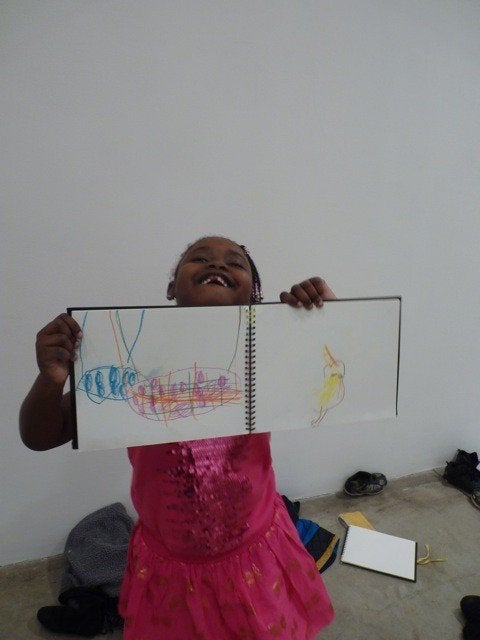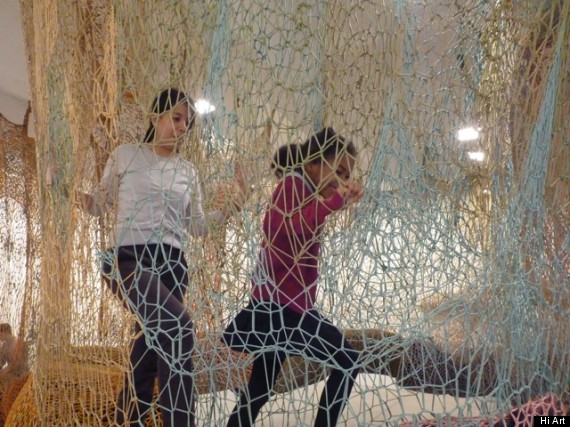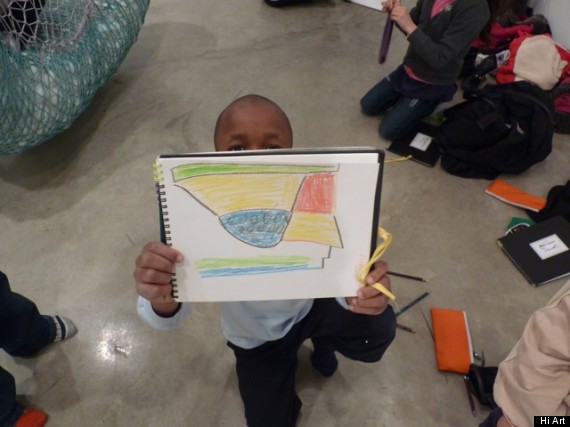
Most educational programs, even those with solid art programs, portray art as a reprieve from homework and arithmetic. Frivolous and fun, art is a way to decorate the realities of learning, growing up and living. But not this program. "Hi Art!" exposes kids to opera and other forms of high art starting at toddlerdom. A bold mission, it's true, but a hugely successful one thus far. In its 15 years of running the program has become one of the most talked-about in New York.
Cyndie Bellen-Berthézène, "Hi Art!"s founder and director, said, "Great art transmits something that is essentially human." It doesn't just color our lives, it has the power to be at the core of how we live. Although when I think of opera we tend to think of a stodgy, elderly woman with teeny binoculars and white gloves, at its core opera is pure human expression. The words, the costumes, the sets, all take the back seat to an indescribable momentum and feeling. What is more accessible than that?

It's a nice idea, but would it work? Visions of tiny children with baby binoculars flashed through my mind. I entered the airy space, combining the best aspects of an artist's loft and a preschool classroom, mixing Pollock-ish mammoth canvasses with, well, large amounts of glitter. Bellen-Berthézène told me about the roots of the project; she was an opera singer, her husband a composer, and the duo would regularly play opera for their daughter. Bellen-Berthézène soon realized her toddler daughter had internalized the music in "Petrushka," predicting the next scene while she couldn't even see the TV. Bellen-Berthézène used her daughter, who was an unusually apt communicator for her age, to express the connection that, presumably, other children were feeling to high art but just could not communicate. "We assume everything has to be made very small for kids," Bellen-Berthézène said. "When in fact kids learn a tremendously large amount, they just don't have the language for it."
My visit to "Hi Art!" came just days after the launch of the “Impact Creativity” campaign, which supports theater education programs in low-income schools around the country. The program is "in response to the alarming decline in funding for arts education and seeks to... help shape a more intelligent, diverse, confident and creative 21st century workforce by investing in arts and theater education as essential learning." This shift from excess to essence is a huge one, one that both "Impact Creativity" and "HiArt!'s" non-profit offshoot, "The Time In Children's Arts Initiative," bravely enact.

In came the kids. Bellen-Berthézène had given be a little background on this particular class. Pulled from one of the Bronx's struggling districts, this kindergarten class was composed of children with special needs and learning disabilities as well as some without. All were from low income families, many from troubled homes. Hi Art! was a sort of permanent field trip, bringing the kids by bus to Chelsea for around two hours once a week.
They immediately flocked to Bellen-Berthézène and I, who were seated on two red, velvet pillows. "Miss Cindy!" they screamed as they gave her hugs and squeezed her hand. The eyed our cups of coffee, spurring choruses of "What are you drinking?" And then, seeing our crossed legs, "Are you doing yoga?" Immediately a cloud formed around us of pint-sized yogis chanting "om."
Bellen-Berthézène sat the kids down to continue watching Rimsky's "Sadko," an opera they would watch and interact with over a two month period. But first, dance time. The kids were glowing as they bounced and twirled to the number, scarves in hand, but they were more than just excited to jump around. They were clearly feeling the music, hovering to the ground in the lull before the crescendo, and then leaping up at the throbbing climax. They didn't have the vocabulary to discuss the progression of the opera, but they were definitely aware of it.

Then we watched a performance. For a moment the kids air-conducted but soon they were transfixed on the screen. Bellen-Berthézène translated the Russian lyrics into an English fairy tale. Then the children interacted with the opera, making a collage based off the day's clip. Although I couldn't stay, the class would later climb through the interactive installation at Tanya Bonakdur Gallery.
The trip was a great example of how opera could change from being a passive pastime of the culturally literate to a vessel for universal human expression. In other words, through programs like these, the opera changes from elitist to equalizing. When those kids were dancing to opera, they got it. As Bellen-Berthézène said, "Mozart speaks to five year olds from the Bronx as much as it speaks to 60 year olds at the Met."
Correction: A previous edition of this article stated the class viewed was part of the HiArt program. In fact it was part of HiArt!'s non-profit offshoot, The Time In Children's Arts Initiative.

